#indigenous art forms
Explore tagged Tumblr posts
Text
Ivana Art Gallery Opens at Ramada Hotel in Jamshedpur
New permanent gallery showcases works by over 80 Indian artists, enhancing the city’s cultural landscape. Ivana Art has opened at the Ramada Hotel, offering a rotating exhibition of diverse artworks by more than 80 renowned Indian artists. JAMSHEDPUR – A significant cultural addition to the city, Ivana Art has launched at the Ramada Hotel, featuring a year-round exhibition of works by over 80…
#art exhibitions#art gallery opening#आयोजन#contemporary Indian art#cultural hub#Event#Indian Artists#indigenous art forms#Ivana Art#Jamshedpur arts scene#Ramada Hotel Jamshedpur#traditional art
0 notes
Text

portrait vessel of a ruler | c. 100 BCE - 500 CE | moche
in the art institute of chicago collection
8 notes
·
View notes
Text

Warlimpirrnga Tjapaltjarri, "Tingari - WARU201602,"
Acrylic on Linen,
244 X W-479 cm.
Courtesy: Kate Owen Gallery
#art#abstract#abstraction#painting#forms#abstractart#geometric#tingari#warlimpirrnga tjapaljarri#kateowengallery#australia#aboriginal#indigenous art
29 notes
·
View notes
Text
i feel like the frequency with which governments ban dancing, a fundamentally harmless, although obviously vital, form of individual and cultural expression. really does emphasize how much the state (any state) is hostile to human life
#calling dance fundamentally harmless is like. i don’t want to downplay its power as an art form. but a lot of the power it wields against a#state. is the expression of ‘we are still here you have not killed us’. which is not a thing that needs expressing if no one is trying to#kill you. just thinking abt the us banning Indigenous dancing and the british banning irish dancing and there’s million other times i’m sure#it’s happened. states keep trying this it really doesn’t seem to work#bunch of old guys in the pub play how can i keep from singing please#you get what i mean#odhran.txt
19 notes
·
View notes
Text
I WARNED YOU ITS SELKIE AU TIME

Here’s Craig!! Ignore that i drew him kinda young here, this was just a doodle, he’s like early 20s in this au
Anyway plenty of people know about female selkie myths: they go on land, get their skin stolen by a man, and they’re forced to marry and live with him till they either 1: die or 2: find their skin and return to the sea
but there are male selkies with a bit of a different lore >:)
male selkies follow the same rules with skins as women do: they shed their skin to become human, and without it, they can’t go home. But, according to mythology, if a heartbroken or unhappy woman cries 7 tears into the sea, she summons a selkie to fall in love with her and take her back to his underwater kingdom.
the stories range on how much of this is the woman’s free will vs. mind control, and no one seems to agree on how long a male selkie can stay on land, but this is kinda important to this au. Not the main focus, but i wanted to mention it anyway cause i found it cool.
but yeah expect more of this cause i’m brainrotting very hard atm <3
#also the ‘Sámi’ above Craig is the indigenous group that is generally responsible for the myth of selkies#they came to the Irish and Scottish isles in kayaks and animal skins (especially seals)#for some reason that made people think they were animals in disguise as people?? idk man#so most of the selkies in their human forms in this au will have clothes based on traditional Sámi/Inuit clothing#(also if im like appropriating or smth lmk but i’ve done a crap ton of research to make sure im not being ultra offensive or anything)#south park#south park au#south park fanart#cyn art#craig tucker#sp craig#craig sp#creek selkie au#<- new name tbd i’m bad at naming things
52 notes
·
View notes
Text
mihkokwaniy
by joshua whitehead
mihkokwaniy
my kokum has many names:
the indian woman
the whitehead lady
a saskatoon female
but my favourite is:
the beauty queen;
they never meant to call her beautiful
what they meant by beauty was:
cheapdirtybrownprostitutedrugaddictalcoholicfirewaterslut
when they write: “an indian about 35 years old
naked from the waist down
died from asphyxiation
at the queen’s hotel
effects of alcohol
&sedatives”
they don’t mean beauty as in:
mino iskwēw
or: “pleasing the sense or mind aesthetically;
of a very high standard; excellent”
what they mean is
she is beautiful for a squaw in ‘62
she pleases the body
of white men who burn in the loins
for the teal-shade of a browning bruise;
when i type into google
“how to say beautiful in cree”
i get: shaoulle
& when i type that into google i get:
“brutal murder-sex assault case”
seeRE:rinelleharpercindygladuetinafontaine
that’s my grandmother:
she is a mino iskwēw
the beauty queen
a woman with a name:
rose whitehead
&shediedbecauseofit
i read somewhere that saskatchewan
is an economic machine
for producing rape—
seed&honey
& in tisdale you can buy a mug that says:
the land of rape and honey
that’s where my kokum is buried
& her grave is a modest little place
where rabbits visit & sometimes chew
where little dandelions bloom
grant wishes to the wind
to her children who are scattered
across the plains of kanata
looking for a quick fix
& for anger to heal
or at least amend
like it does for a judge
who gifts a man six years
for the death of three women;
i think of my nôhtâwiy
her son who lost his name to a polish man
& felt the sting of day schools
even if priests beat & made honey
with their fists smooshed
into the sweet rot of little brown boys
who liked hockey & lived in suburbs
with whites who made them wait
in the freezing cold
& broke their noses on the ice—
but you’re still not ready to apologize
for that just white yet
my kokum has made many headlines:
“woman found strangled”
being the most consistent
a fifty word article that calls for sympathy
not for the “strangulation death
of the whitehead woman”
but for the man:
steven kozaruk of esterhazy
who “was suffering from the effects
of alcohol and sleeping pills”
even with a “seven-man jury”
& “thirteen witnesses,” lives—
his whiteness is his weakness
(even if its biceps can crack a brown neck like a wishbone)
and that weakness is his innocence;
the life of my kokum is worth:
six years & fifty words;
all these things overlap
interweave, interlay, interplay, interact
penes
|inter|intra|
|probo|capio|vita|
terra|corona|letum|nullius
tansimaslow
my kokum is famous
a real holly golightly
i bet she even eats
fried bologna sandwiches
at tiffanys
aint that right gran?
when i visit your grave
in saskatoon
i see the face of kozaruk
on the prairie scene
fatteninginsuburbia
& here you are
with a rag-tag little monument
made of sticks & leaves
stems from jackrabbits
that seem to visit often
a little blue ribbon
god knows from who
& a sad little brown boy
with a million questions like:
how are you doing?
do you hate klik too?
what would life have been like
if you had lived beyond thirtyfive?
would i be alive?
would the cancers in my dad
not have crept & lived
spelled doom on his skin?
would i be able to speak cree
without having to google translate
this for you?
would you make me cookies
& teach me how to sew back on the limbs
to my plush rabbit floppy ears?
would you call me “m’boy?”
& take me to sundances
powwows, bingo nights too?
would you make sure i feed the rez dogs
when they all come around?
would you make me a jingle dress
cause i want to be a pretty dancer like you—
would you teach me what it means to be two-spirit
tell me i can be a beautiful brown boy in love?
make me say niizh manitoag—feel the power on the tongue?
would you teach me to knead bannock
make life from lard—
a real ratio for reckoning?
hi kokum?
can i call you on the phone?
i promise not to call collect
i just want to hear your voice
tell you i learned what it means
to say i love you
& feel the whole of cree
coalescing in my breath:
kisâkihitin; my god, kisâkihitin
hey gran?
can i ask you something quick?
are you okay up there in godknowswhere?
do you see what we’ve all done?
my dad says these things all happen for a reason
that i wouldn’t be here if they didn’t
hey gran?
i’m sorry—
you know that right?
did you have to die for me to be alive?
heygranheygranheygranheygran
i’ll let you be
& stop being sick’ning
i bet you’re busy
cooking macaroniandtomatosoup
for twelve hundred missing & murdered women,
girls & two-spirit folk
it’s just, am i supposed to hate him, gran?
tell him that with one death
he ruined the lives of an entire family?
i want to tell him that the life of a person
is an archive of memory
& when you he strangled the life out of you
in a queens hotel shoddy little bed
the last gasping breath you exhaled
held in it little particles
fragments of time:
a bay leaf boiling in tomato sauce;
a flake of tuna that a
cat named randy
licked&licked&licked;
the soft cry of a baby boy
plummeting into day;
the smell of sweet grass smudging
monsters from our bedrooms;
tell him: when you kill a memory
you snuff out metaphor
turn off the light in a home;
you destroy a world where children
are nursing still&still;
—& aint that the hardest truth?
to be honest
i’m no aeneas
no marvellous country house poem
no faeryland, no golden world
no chimeric homeric epic
i’m just a little brown boy
queered by his colour
writing for a kokum he’s never met;
but i promise you:
these spaces can transform
an injun into a warrior
who can claw, scrape, fight
who can write on a piece of paper
sign a name instead of an ‘X’
that says, “this is my kokum
& her name is Rose Whitehead;
and she is
beauty queen extraordinaire.”
I dedicate this poem to all missing and murdered Indigenous women, girls, and two-spirit peoples; for their families, friends, loved ones, and kin. We are a collective trauma that demands to be examined, reconciled, resolved, and healed.
Today we survive; tomorrow we resist.
#i need everyone to read this#i'm in vancouver and i didn't bring my copy of full metal indigiqueer so i can't read this in the physical form#but being in vancouver feels so heavy because there is so much loss#vancouver and winnipeg are big for mmiw unfortunately#poetry#indigenous poetry#literature#full metal indigequeer#joshua whitehead#cree#oji-cree#art#indigenous art#indigenous authors#book reccomendations
12 notes
·
View notes
Text
"Truly fine examples of Coptic art and architecture from before the 640s* do not exist because most of them were destroyed or fell into disrepair and decay" settling in for real will have you feeling like you need a century long smoke break
#cipher talk#It really hits when you like. See artifacts that ARE magnificent quality and craftsmanship#Like a lot of the paintings that have survived are lovely and the stelae carvings are made with love#But you see a door or the top of the column that was carved by a master and go. Oh.#It's not /just/ a stylistic convention that made those paintings look that way#* is bc time is a permeable barrier and plenty of stuff after that that are fine examples of Coptic art don't exist either#I mean we were a majority in Egypt until Mamluk rule so there's. A lot of art between those two points in time#Man.#'Indigenous peoples live in a post apocalyptic world' was not a quip in any way shape or form
2 notes
·
View notes
Photo
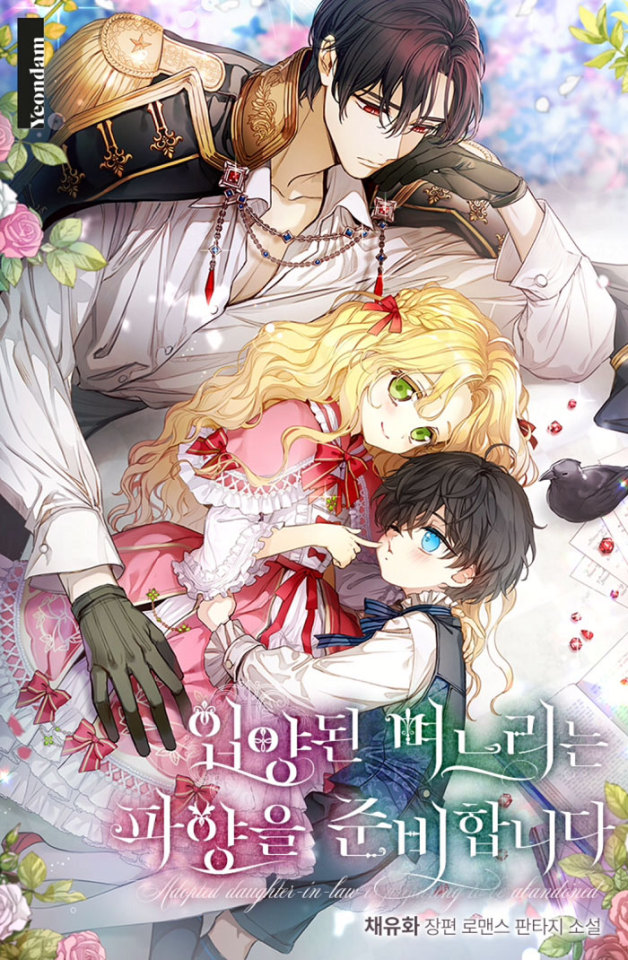

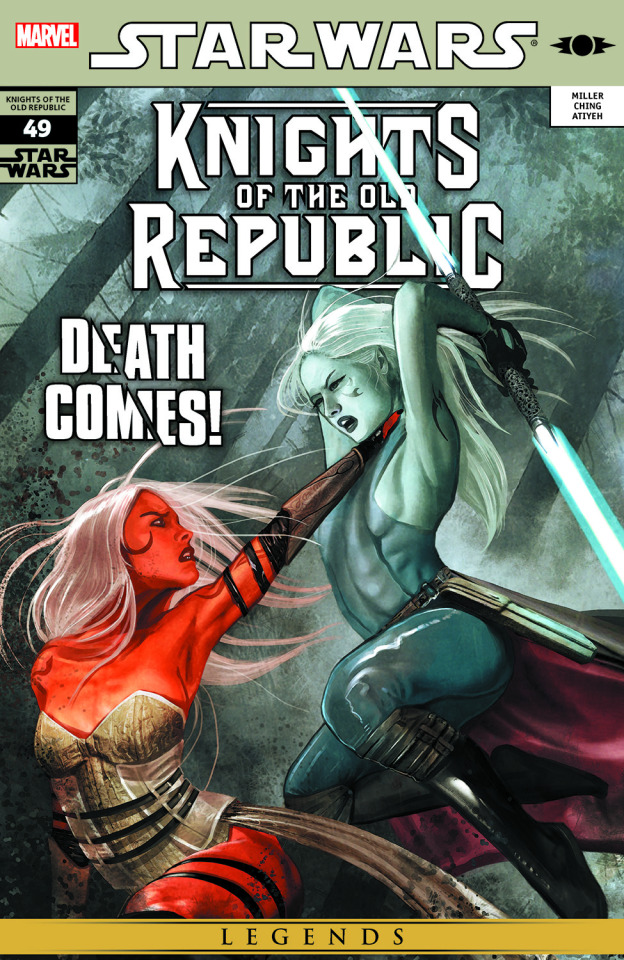
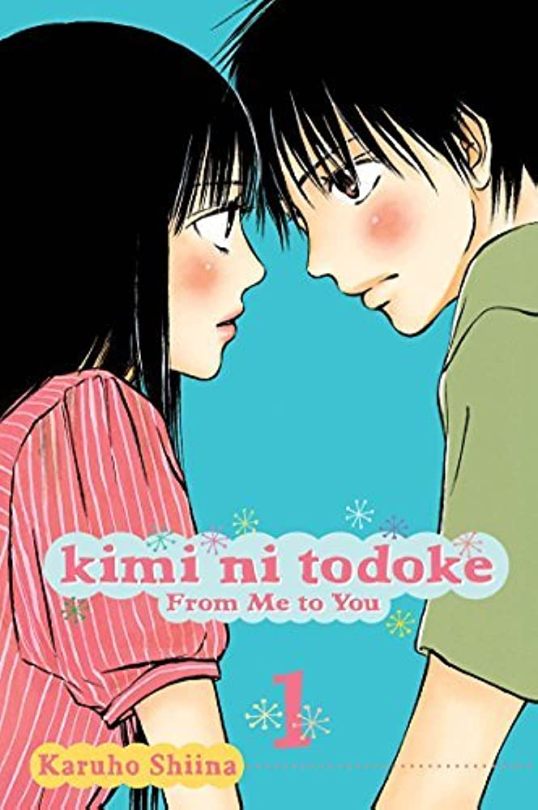

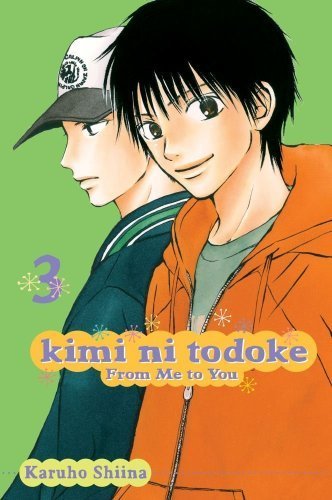
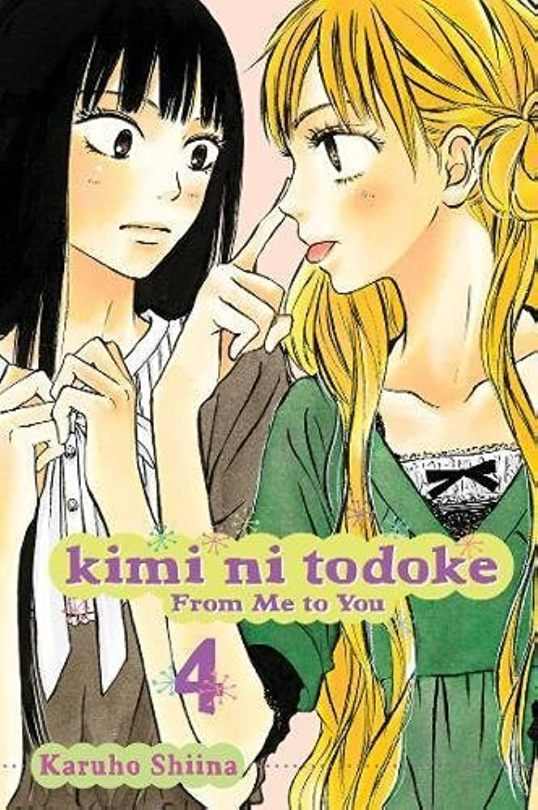
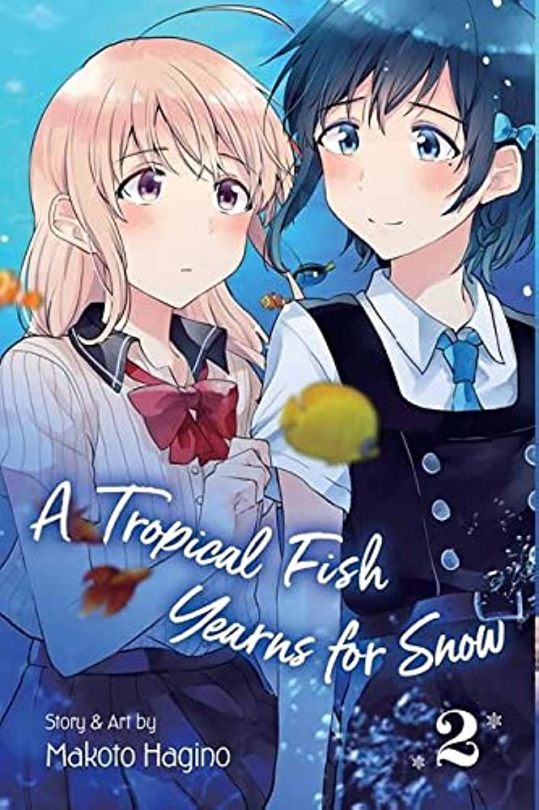
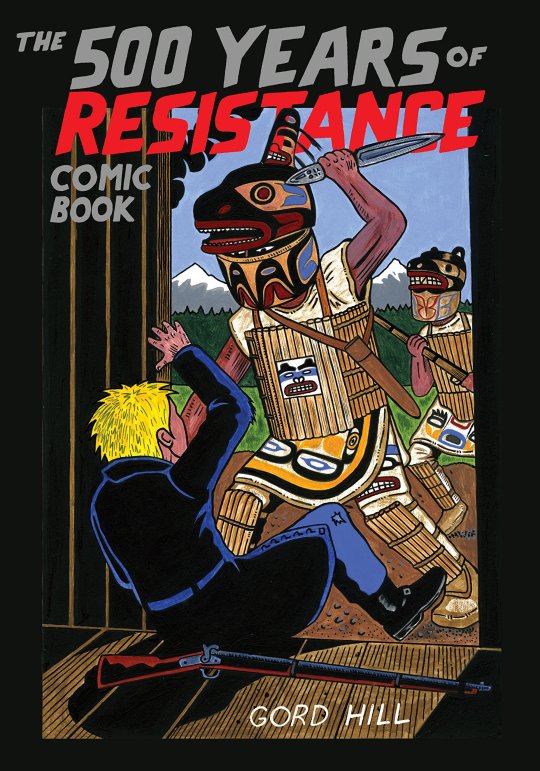
Books Read in 2023:
I Don’t Want to be the Duke’s Adopted Daughter-in-Law by Chae Yoohwa (2022)
Knights of the Old Republic Vol. 8 by John Jackson Miller (2010)
Knights of the Old Republic Vol. 9 by John Jackson Miller (2010)
Kimi ni Todoke: From Me to You Vol. 1 by Karuho Shiina (2006)
Kimi ni Todoke: From Me to You Vol. 2 by Karuho Shiina (2006)
Kimi ni Todoke: From Me to You Vol. 3 Karuho Shiina (2007)
Kimi ni Todoke: From Me to You Vol. 4 by Karuho Shiina (2007)
A Tropical Fish Yearns for Snow Vol. 2 by Makoto Hagino (2018)
The 500 Years of Resistance Comic Book by Gord Hill (2010)
[ID: Covers of the aforementioned books. End ID.]
#2023media#gigi.txt#i don't want to be the duke's was. forgettable honestly lmao#standard transmigration into a villain. not super like eye catching?#love the kotor comics <3 tho tbh the endgame het romance wasn't. compelling imo#like i love both characters and i like them as friends but them kissing at the end was. huh.#no thanks they are besties in my mind forever#i love kimi ni todoke wah wah i don't think ive ever finished it and i'm determined to actually finish it#repicked up tropical fish and i quite like it still.#nothing standout but enjoyable for sure#500 years of resistance talks about indigenous resistance in comic book form#art wasn't the best but i found the modern resistance stuff very interesting and i want to learn more abt it
4 notes
·
View notes
Text
Can I interest you in some
JOCCASINS?
I think there's some jukluks too.
#I love Manitobah Mukluks dearly#not just because they're the only winter boots that actually fit I've been able to wear#but the fact that this would negate their ability to fit me#is definitely a part of why I'm questioning this#but if people like it they like it#and I don't want to be the asshole who denies that tapestry is Inuit art#(i.e. Indigenous people should not be limited to the pre-Colombian forms of their traditional crafts to be called traditional artists.)
1 note
·
View note
Text

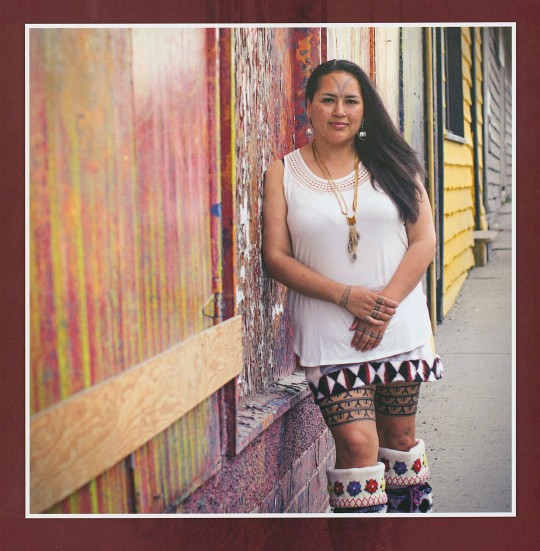
The author, Angela Hovak Johnston.

Johnston and Marjorie Tungwenuk Tahbone, traditional tattoo artist.

Catherine Niptanatiak: "I designed my own, something that represents me and who I am, something that I would be proud to wear and show off, and something that would make me feel confident and beautiful. . . . I have daughters and I would like to teach them what I know. I would like for them to want to practice our traditions and keep our culture alive."

Cecile Nelvana Lyall: "On my hand tattoos, from the top down, the triangles represent the mountains. . . . The Ys are the tools used in seal hunting. . . . The dots are my ancestors. . . . I am so excited to be able to truly call myself and Inuk woman."

Colleen Nivingalok: "The tattoos on my face represent my family and me. The lines on my chin are my four children -- my two older boys on the outside protecting my daughters. The lines on my cheeks represent the two boys and the two girls on either side. The one on my forehead represents their father and me. Together, we live for our children."
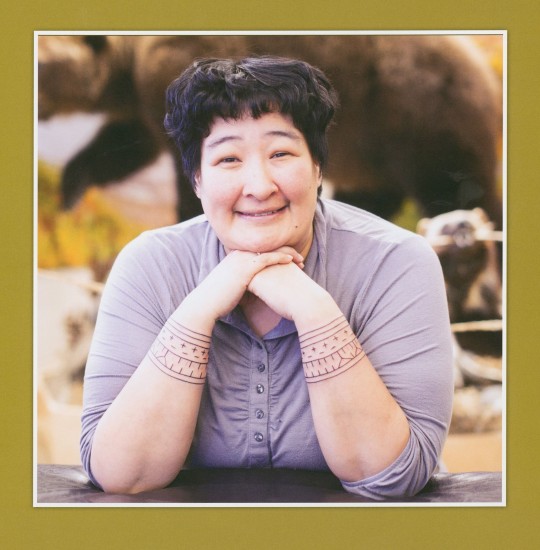
Doreen Ayalikyoak Evyagotailak: "I have thought about getting traditional tattoos since I was a teenager. . . . When I asked the elders if I could have my own meaning for my tattoos, they said it wouldn't matter. My tattoos symbolize my kids."
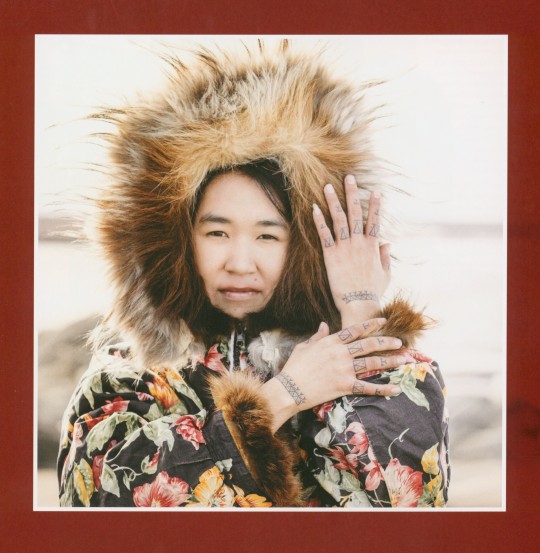
Mary Angele Takletok: "I always wanted traditional tattoos like the women in the old days. I wanted them on my wrists and my fingers so I could show I'm Inuk."

Melissa MacDonald Hinanik: "As a part of celebrating my heritage and revitalizing important traditional customs that form my identity, I believe I have earned my tattoos. I am a beautiful, strong young woman. I am a mother, a wife, a daughter, a friend, and an active community member. I reclaim the traditional customs as mine, I re-own them as a part of who I am."
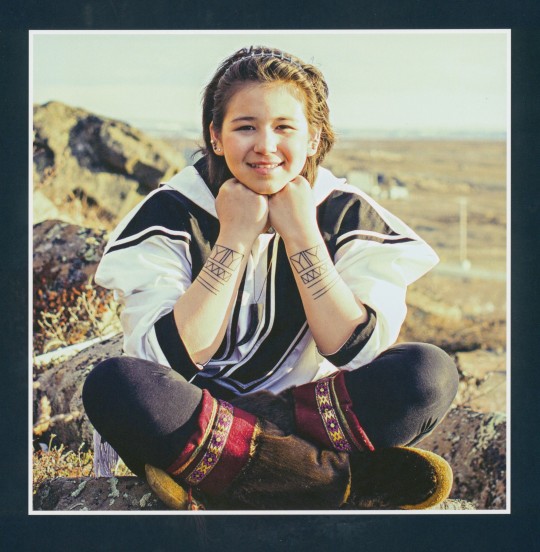
Star Westwood: "We still have some of our culture, but some things are slowly dying. Having tattoos helps us keep our culture alive. . . . . My tattoos represent my dad and my dad's dad. The ones closest to my wrists represent my sisters."
------------------------------------------------------------------------------
National Tattoo Day
July 17 is National Tattoo Day. To celebrate, we present some images from Reawakening Our Ancestors' Lines: Revitalizing Inuit Traditional Tattooing, compiled by Angela Hovak Johnston, co-founder with Marjorie Tahbone of the Inuit Tattoo Revitalization Project, with photographs by Inuit photographer Cora DeVos, and published in Iqaluit, Nunavut by Inhabit Media Inc. in 2017.
For thousands of years, Inuit have practiced the traditional art of tattooing. Created the ancient way, with bone needles and caribou sinew soaked in seal oil, sod, or soot, these tattoos were an important tradition for many Inuit women, symbols etched on their skin that connected them to their families and communities. But with the rise of missionaries and residential schools in the North, the tradition of tattooing was almost lost. In 2005, when Angela Hovak Johnston heard that the last Inuk woman tattooed in the old way had died, she set out to tattoo herself in tribute to this ancient custom and learn how to tattoo others. What was at first a personal quest became a project to bring the art of traditional tattooing back to Inuit women across Nunavut.
Collected in this book are photos and stories from more than two dozen women who participated in Johnston's project. Together, these women have united to bring to life an ancient tradition, reawakening their ancestors' lines and sharing this knowledge with future generations. Hovak Johnston writes: "Never again will these Inuit traditions be close to extinction, or only a part of history you read about in books. This is my mission."
Reawakening Our Ancestors' Lines forms part of our Indigenous America Literature Collection.

Angela Hovak Johnston (right) with her cousin Janelle Angulalik and her aunt Millie Navalik Angulalik.
View other posts from our Indigenous America Literature Collection.
#National Tattoo Day#tattoos#holidays#Inuit traditional tattoos#Inuit tattoos#Inuit#Inuk#Reawakening Our Ancestors' Lines#Angela Hovak Johnston#Cora DeVos#Cora Kavyaktok#Marjorie Tahbone#Inuit Tattoo Revitalization Project#Inhabit Media Inc.#photographs#Inuit women#Indigenous America Literature Collection#Native American Literature Collection
3K notes
·
View notes
Text
Jharkhand MLA Sukhram Oraon Attends Chhau Dance Event in Hijia Village
Sukhram Oraon pledges support for traditional art form at annual cultural gathering Chakradharpur legislator emphasizes importance of preserving and promoting local dance heritage. CHAKRADHARPUR – Chakradharpur MLA Sukhram Oraon graced a Chhau dance performance as the chief guest in Hijia village of Baipi Panchayat on Wednesday. The annual Chhau dance program in Hijia village drew enthusiastic…

View On WordPress
#राज्य#Baipi Panchayat events#Chakradharpur Chhau dance event#Chakradharpur constituency cultural initiatives#Hijia village annual festival#indigenous art forms Jharkhand#Jharkhand Mukti Morcha youth engagement#Jharkhand traditional arts promotion#local community celebrations#MLA Sukhram Oraon cultural support#rural cultural preservation#state
0 notes
Text

portrait vessel of a ruler with painted face resting on feet | c. 100 BCE - 500 CE | moche
in the art institute of chicago collection
3 notes
·
View notes
Text

hello teddy.
He's my friend.
#art#my art#digital art#mental health#mh in art form#i really only draw him when i have really bad anxiety#indigenous art#support indigenous artists#support me on kofi
1 note
·
View note
Text
Meet Hawilkwalał Rebecca Baker-Grenier of the Kwakiuł, Musgamagw Dzawada’enuxw, and Skwxwú7mesh First Nations. Rebecca is a fashion designer who debuted her first collection at New York Fashion Week in 2022 and sees “fashion as a living practice that is rooted in our art form, laws, and worldview.”
See her work in the Museum’s Northwest Coast Hall as part of the Grounded by Our Roots exhibition, which features extraordinary works by up-and-coming Indigenous artists who draw inspiration from their cultural traditions.
#amnh#museum#things to do in nyc#new york city#fashion#indigenous art#northwest coast#northwest coast art
920 notes
·
View notes
Text
500-year-old Snake Figure from Peru (Incan Empire), c. 1450-1532 CE: this fiber craft snake was made from cotton and camelid hair, and it has a total length of 86.4cm (about 34in)

This piece was crafted by shaping a cotton core into the basic form of a snake and then wrapping it in structural cords. Colorful threads were then used to create the surface pattern, producing a zig-zag design that covers most of the snake's body. Some of its facial features were also decorated with embroidery.

A double-braided rope is attached to the distal end of the snake's body, near the tip of its tail, and another rope is attached along the ventral side, where it forms a small loop just behind the snake's lower jaw. Similar features have been found in other serpentine figures from the same region/time period, suggesting that these objects may have been designed for a common purpose.

Very little is known about the original function and significance of these artifacts; they may have been created as decorative elements, costume elements, ceremonial props, toys, gifts, grave goods, or simply as pieces of artwork.
The Metropolitan Museum of Art argues that this figure might have been used as a prop during a particular Andean tradition:
In a ritual combat known as ayllar, snakes made of wool were used as projectiles. This effigy snake may have been worn around the neck—a powerful personal adornment of the paramount Inca and his allies—until it was needed as a weapon. The wearer would then grab the cord, swing the snake, and hurl it in the direction of the opponent. The heavy head would propel the figure forward. The simultaneous release of many would produce a scenario of “flying snakes” thrown at enemies.
The same custom is described in an account from a Spanish chronicler named Cristóbal de Albornoz, who referred to the tradition as "the game of the ayllus and the Amaru" ("El juego de los ayllus y el Amaru").
The image below depicts a very similar artifact from the same region/time period.

Why Indigenous Artifacts Should be Returned to Indigenous Communities.
Sources & More Info:
Metropolitan Museum of Art: Snake Ornament
Serpent Symbology: Representations of Snakes in Art
Journal de la Société des Américanistes: El Juego de los ayllus y el Amaru
Yale University Art Gallery: Votive Fiber Sculpture of an Anaconda
#artifacts#archaeology#inca#peru#anthropology#fiber crafts#americas#pre-columbian#andes#south america#art#snake#effigy#textiles#textile art#embroidery#history#stem stitch#serpent#amaru#mythology#andean lore#fiber art#incan empire#indigenous art#repatriation#middle ages#flying snakes tho
922 notes
·
View notes
Text




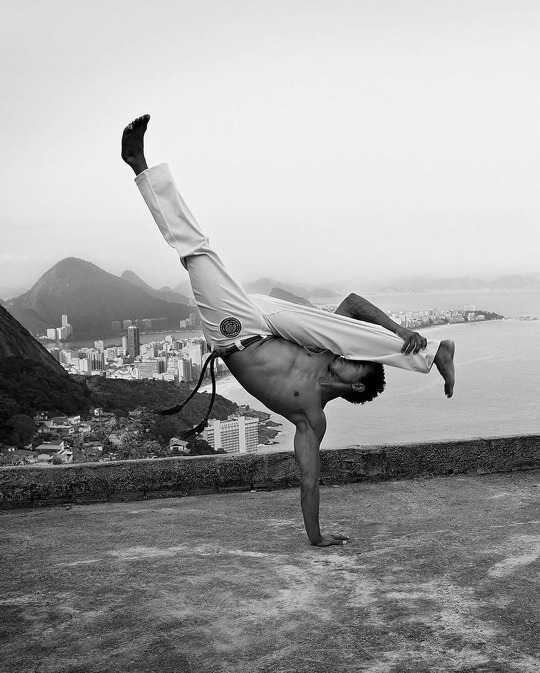





Repost from @moyoafrika
•
#repost• @whatsculture History Class: Tracing the roots of Capoeira. The Afro-Brazilian martial art form incorporates acrobatics, dance, folklore, and music. Two opponents play each other inside a circle (Roda) formed by the other players, who create rhythm for the game by clapping, singing, and playing traditional instruments. It’s the second most popular sport in Brazil and is practiced in different parts of the world today. To understand the significance, we look at how it is a phenomenon born out of migration.
“Capoeira was conceived in Africa and born in Brazil,’’ Mestre Jelon Vieira once said. As a colony of the Portuguese Crown, millions of Africans were shipped and sold in Brazil. There, enslaved Africans shared their cultural traditions, including dances, rituals, and fighting techniques, which eventually evolved into capoeira. Many elements and traditions that would inform capoeira are said to have originated in Angola. At that time, 80% of all enslaved Africans in Rio de Janeiro came from Central West Africa from countries that are now known as Gabon, Angola and both Congos.
People from Angola were prominent among the enslaved Africans who played the game on the streets and squares of Rio de Janeiro, Salvador and other Brazilian port cities at the beginning of the nineteenth century. With many enslaved Africans revolting against slavery, they would soon form communities in villages called quilombos in which they could sustain different expressions of African culture. They used capoeira to defend themselves and resist capture, disguising its martial intent with music, song, and dance.
Capoeira became illegal after the abolition of slavery in 1888. Practitioners were socially ostracised for more 40 years, until the legendary capoeira master, Mestre Bimba, opened the first capoeira school in Bahia in 1932. From there, the martial art would reach all parts of the world. At its core, capoeira is born out of a mix of African and Brazilian indigenous cultures and it represents resistance and resilience 🇧🇷🌍
#moyoafrika #brazil #angola🇦🇴 #africanculture #africanculture #africandiaspora #african
#african#afrakan#kemetic dreams#africans#brownskin#brown skin#afrakans#african culture#afrakan spirituality#capoeira#Brazilian#kids#koda#breakdancing
883 notes
·
View notes